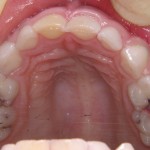
Atraumatic Restorative Treatment (ART) is a minimally invasive approach which involves removal of caries using hand instruments alone, usually without use of anaesthesia and electrically driven equipment. Then restoration with adhesive materials such glass ionomer cement (GIC), composite resins, resin-modified glass-ionomer cement (RM-GICs) and compomers. ART was developed mainly for treating caries in children living in under-served areas of the world where resources are limited.
The aim of this review was to assess the effects of Atraumatic Restorative Treatment (ART) compared with conventional treatment for managing dental caries lesions in the primary and permanent teeth of children and adults.
Methods
Searches were conducted in the Cochrane Oral Health’s Trials Register, the Cochrane Central Register of Controlled Trials (CENTRAL), Medline, Embase, LILACS, BBO, The US National Institutes of Health Trials Registry (ClinicalTrials.gov) and the World Health Organization International Clinical Trials Registry Platform databases. There were no restrictions on language or date of publication.
Randomised controlled trials (RCTs) of parallel-group, split-mouth or cluster-study designs with at least six months’ follow-up that compared the effects of ’true’ ART with a conventional restorative approach using the same or different restorative dental materials were considered. The primary outcomes were restoration failure and pain. Standard Cochrane data abstraction and analysis procedures were followed.
Results
- 15 RCTs randomising 3760 patients (9944 teeth) were included.
- 5 studies were parallel design, 6 cluster-randomised parallel-group studies and 4 split mouth design.
- 11 studies involved primary teeth, 4 permanent teeth
- All 15 studies were at high risk of bias.
- 13 studies used high-viscosity glass ionomer (H-GIC) as the restorative material; one used composite and one a resin-modified glass ionomer cement (RM-GIC)).
- Meta-analysis ( 5 studies 643 patients) found that compared to conventional treatment ART may increase the risk of restoration failure in the primary dentition, over a follow-up period from 12 to 24 months; Odds ratio (OR) = 1.60 (95%CI; 1.13 to 2.27) [low-quality evidence].
- ART may reduce pain during procedure compared with conventional treatment, mean difference (MD) = -0.65 (95%CI; -1.38 to 0.07) 40 participants analysed; [low-quality evidence].
- Given the very low quality of the evidence from single studies, we are uncertain about the restoration failure of ART compared with conventional treatment using composite over a 24-month follow-up period (OR =1.11 (95%CI; 0.54 to 2.29); one study; 57 participants) and ART using RM-GIC in the permanent teeth of older adults with root caries lesions over a six-month follow-up period (OR =2.71(95%CI; 0.94 to 7.81); one study; 64 participants).
- No studies reported on adverse events or costs.
Conclusions
The authors concluded: –
Low-quality evidence suggests that ART using H-GIC may have a higher risk of restoration failure than conventional treatment for caries lesions in primary teeth. The effects of ART using composite and RM-GIC are uncertain due to the very low quality of the evidence and we cannot rely on the findings. Most studies evaluated the effects of ART on the primary dentition.
Well-designed RCTs are required that report on restoration failure at clinically meaningful time points, as well as participant-reported outcomes such as pain and discomfort. Due to the potential confounding effects from the use of different dental materials, a robust body of evidence on the effects of ART compared with conventional treatment using the same restoration material is necessary. We identified four ongoing trials that could provide further insights into this area.
Comments
A number of previous reviews of the ART approach have been undertaken (Dental Elf – 19th Dec 2012) several of these do not have the methodological rigour of this Cochrane review. Previous reviews have not demonstrated differences between ART and conventional approaches unlike this new review which suggest a higher failure rate for ART. While ART was developed in the 1980s a number of modified ART approaches have been developed which adds some confusion to this area and this review helpfully clarifies their definition of ‘true ART’.
With between 60-90% of school-age children being affected by dental caries ART may, ‘still be considered as a treatment option where access to resources (e.g. dentists, rotary handpieces and electricity) are limited’ as suggested by the authors. However, there is still a need for well-designed high-quality studies that are well reported to assess a wider range of outcomes including cost-effectiveness. The authors highlight 4 ongoing studies which may contribute to this in the future.
Links
Primary Paper
Dorri M, Martinez-Zapata MJ, Walsh T, Marinho VCC, Sheiham (deceased) A, Zaror C. Atraumatic restorative treatment versus conventional restorative treatment for managing dental caries. Cochrane Database of Systematic Reviews 2017, Issue 12. Art. No.: CD008072. DOI: 10.1002/14651858.CD008072.pub2.
Other references
Dental Elf – 19th Dec 2012
Dental Elf – 26th Mar 2015

Cochrane Oral Health Group blog available at http://bit.ly/2FjgNYR